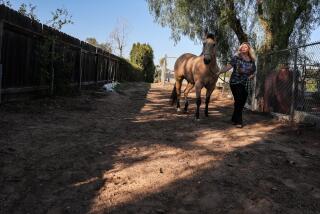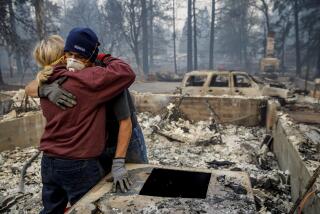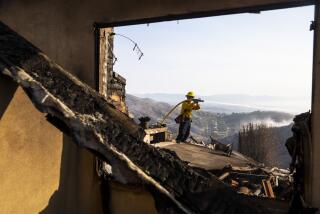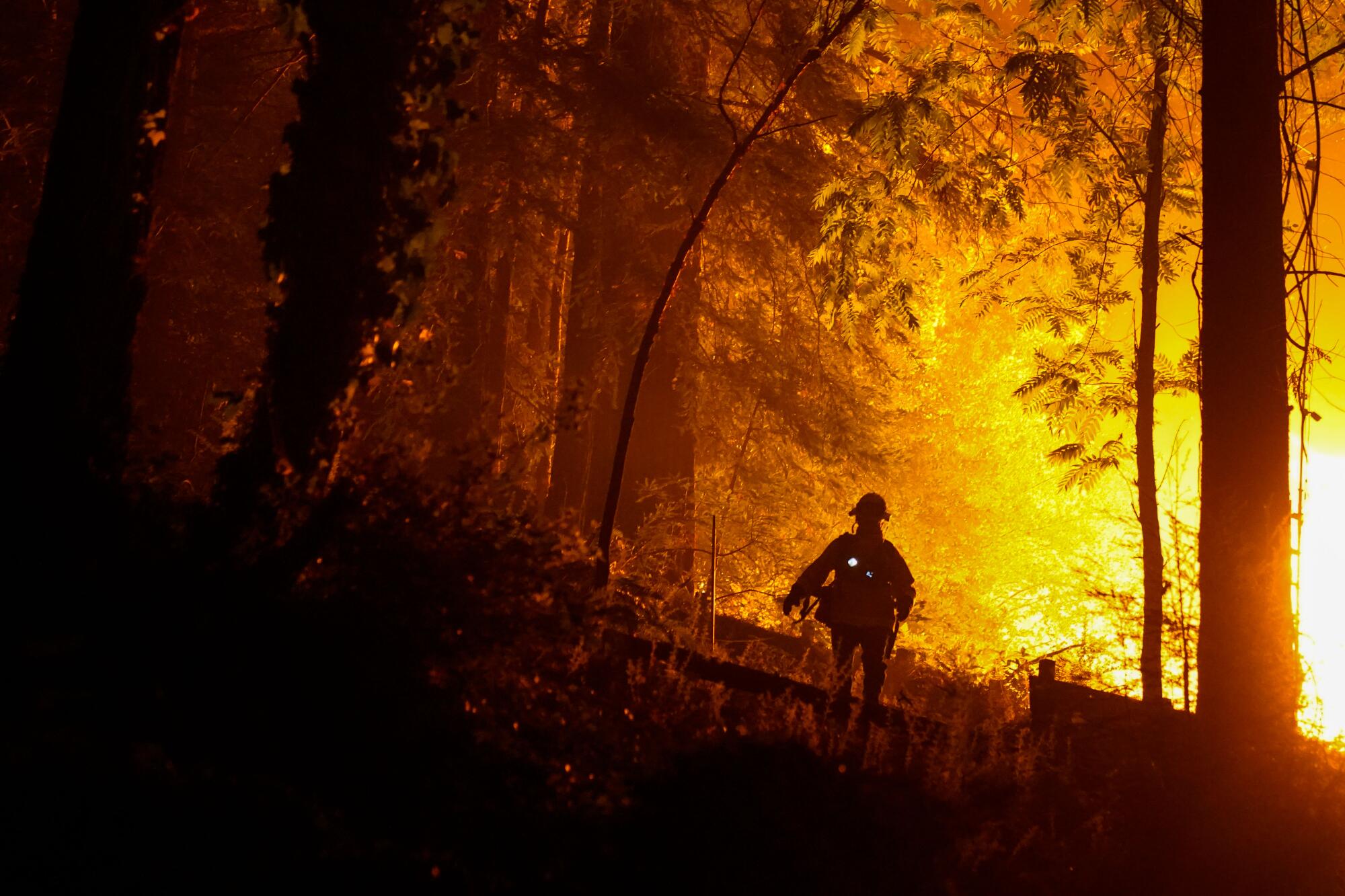
Feeling abandoned by the state and federal government during an unparalleled conflagration of fires, volunteer firefighting units in two Santa Cruz mountain towns have been forced to tap an alternative: unofficial help from an elite network of the nation’s finest emergency response units — who quickly provided needed equipment and support.
Over the weekend, crews from Menlo Park delivered spare water tenders, firefighting rigs, cots, sleeping bags, radios and communications equipment, food and water to struggling firefighting units in Boulder Creek and Ben Lomond. There, veteran and decorated first responders established makeshift command and operations centers to battle the CZU Lightning Complex fire raging in the mountains above Silicon Valley.
“These guys needed the help. They’re my people. So, we sprang into action,” said the Menlo Park Fire Protection District chief, Harold Schapelhouman. “It’s just what we do. No questions asked.”
As of Monday, the CZU fire had burned 78,000 acres, destroyed 276 homes and was only 13% contained. Mother Nature was good to the firefighters Sunday night, bringing cooler temperatures and even some rain to dampen the flames, and Cal Fire crews were able to drop water Monday.
But if lightning or strong southward winds return, it could threaten communities in the fire’s path, including Felton, Santa Cruz and the evacuated campus of UC Santa Cruz.
The body of a 70-year-old man was recovered in the fire area over the weekend, according to Santa Cruz County Sheriff’s Chief Deputy Chris Clark.
Clark said the man’s body was found “some distance away” from what appeared to be his vehicle at the end of Last Chance Road — deep in the mountains northwest of the community of Davenport in Santa Cruz County.
Schapelhouman’s district is home and sponsoring agency to an elite FEMA Urban Search and Rescue unit. It’s called California Task Force 3, and it is one of 28 such forces in the United States.
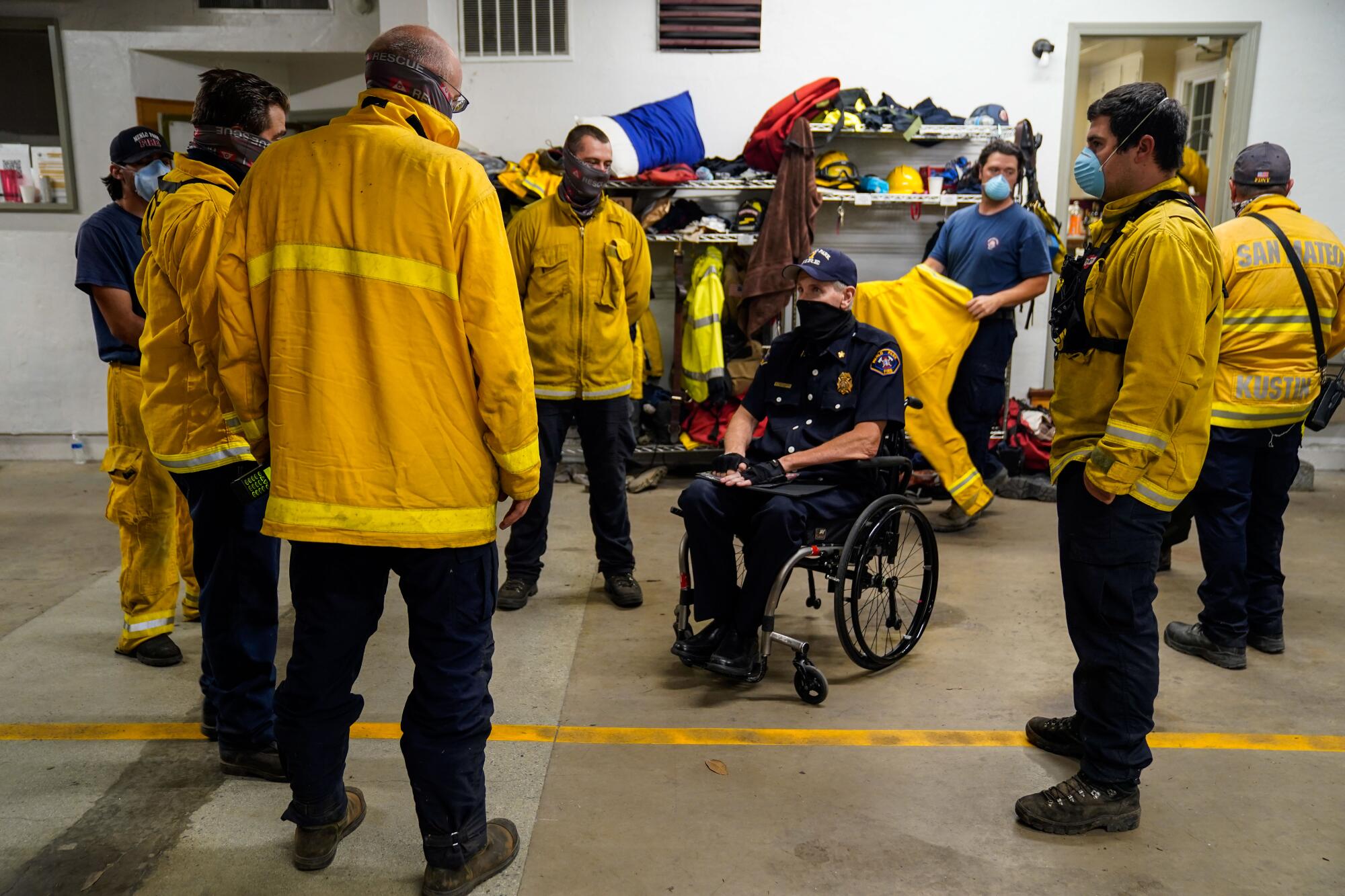
The team of roughly 200 has responded to some of the nation’s most notorious and deadly disasters, including the 2018 Camp fire, the 2010 San Bruno gas line explosion, and notorious hurricanes such as Katrina, Irma and Harvey.
During Katrina, the team was sent out to find survivors and “recover bodies,” said Rudy Torres, the task force’s lead mechanic. He described how the team motored around the flooded city of New Orleans in 2005 cutting holes into the attics of submerged homes, sticking their noses inside to smell for decomposing corpses.
So, when Schapelhouman last week called Carl Kustin — a resident of Boulder Creek, retired volunteer firefighter and active member of the FEMA CA-TF3 Incident Support Team — Kustin told him the situation was dire. That was when Schapelhouman jumped into action.
“You’ve got to understand, we do this kind of work because we care about people and their communities. But this time, it’s different. This time, it’s our home.”
— Carl Kustin, logistics veteran and retired volunteer firefighter in Boulder Creek
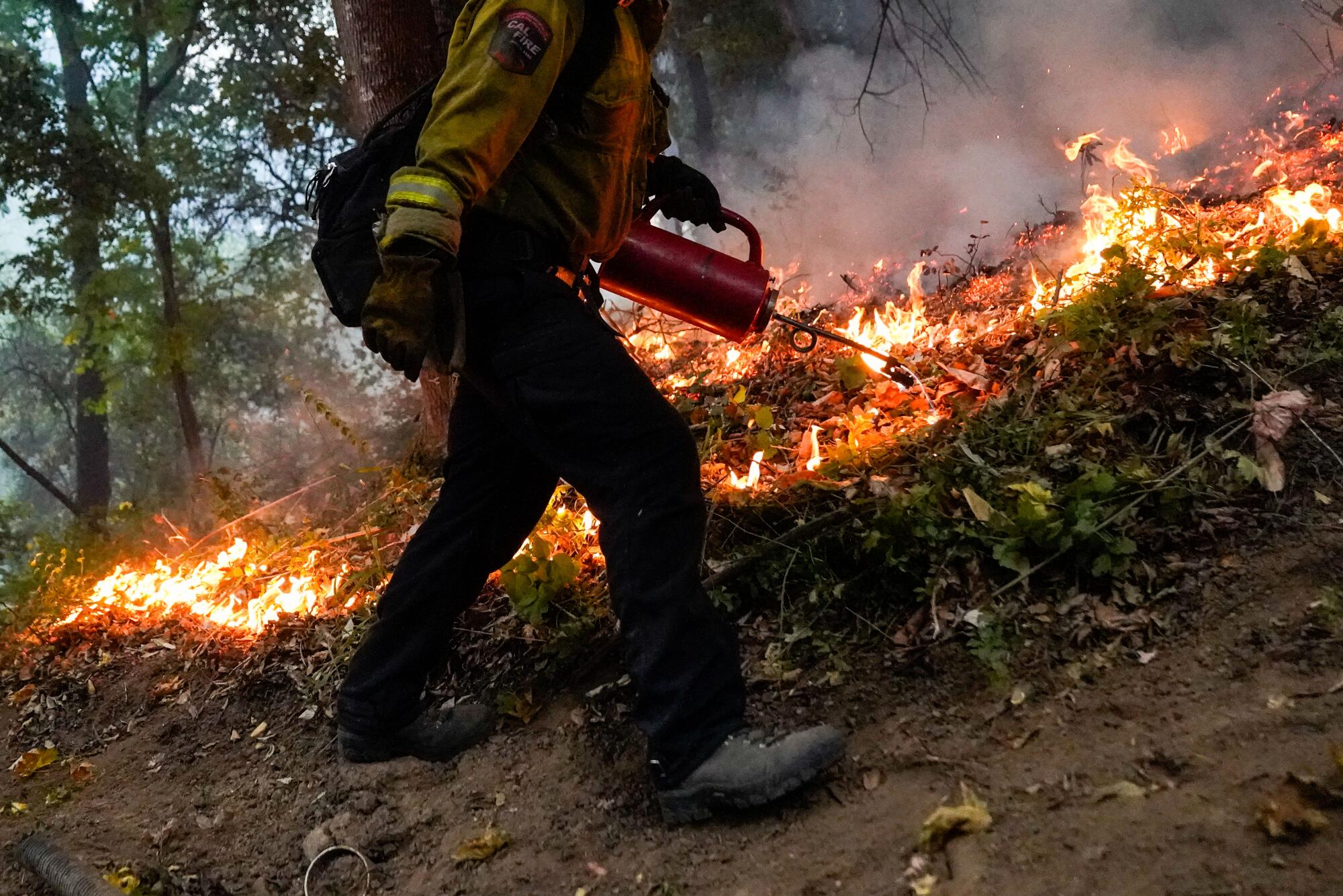
With the help of Torres, the team prepared a fire engine and water tender used for training purposes, and got the equipment road-ready for the undersupplied firefighting crews in the mountains.
On Friday night, Schapelhouman — who became a quadriplegic after falling off a ladder in 2013 — drove up to the mountains to scout the situation.
He saw men sleeping on the floor of the firehouse. He saw they were running low on food and supplies. He felt their exhaustion, desperation and fear as they tried to fight the fires, aware that support and reinforcements were unlikely to be coming.
“I said to Kustin, what do you need?” he said.
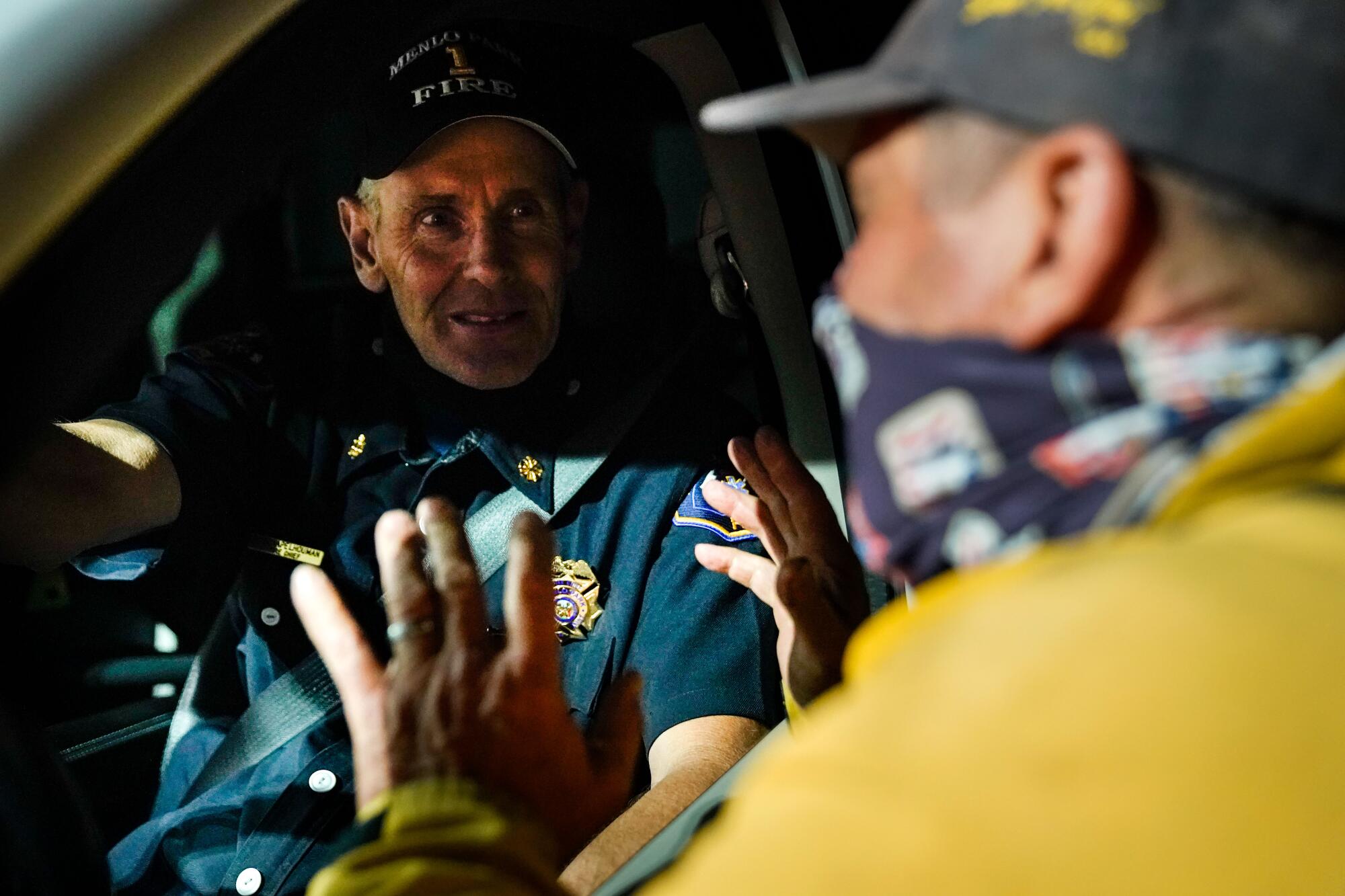
Schapelhouman returned home early Saturday morning and mobilized his team and network. He secured radios, communications equipment, batteries and even firefighting foam, which he sent up into the mountains that afternoon with a unit that was lending help.
He then asked his crew to fill a FEMA supply truck with pallets of water and Gatorade, cots and sleeping bags, which Torres and a small team drove up late Saturday night.
According to Stacie Brownlee, Ben Lomond’s fire chief, Cal Fire started providing limited support after media reported on the agency’s inability to help as it confronted a multitude of fires across California.
Schapelhouman also secured several infrared and heat-seeking drones for the volunteer firefighters to use for fire reconnaissance. Although Cal Fire and the FAA initially declined to approve the flights — citing concerns about aircraft safety — he got the green light Monday morning.
By afternoon, members of Task Force 3’s drone team were in Scott’s Valley getting ready to deploy the fleet Wednesday morning.
“We don’t take no for an answer,” he said. “It’s not in our blood.”
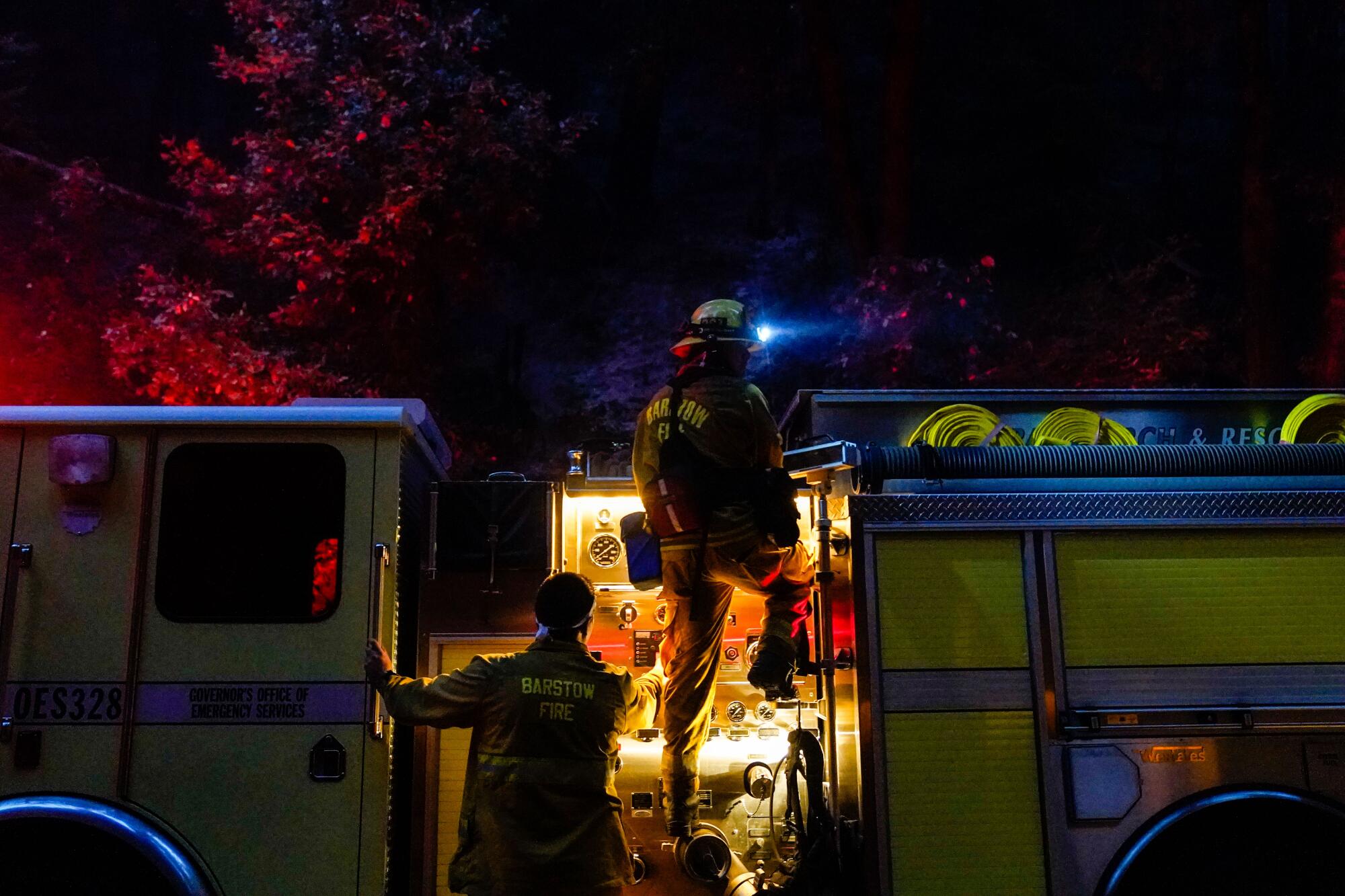
Meanwhile, Kustin, who lives in Boulder Creek and is a retired member of a volunteer firefighting force but still an active member of Schapelhouman’s incident command unit, began preparing the firehouse and the surrounding area to serve as an emergency operations center.
In Boulder Creek, the volunteer firefighters had been battling flames nearly nonstop for five days and were exhausted. They’d been catching naps, when they could, on the concrete floor of the firehouse — amid the rolling engines, emergency calls and swapping shifts of their crewmates.

As a result, the firehouse — engine room, kitchen and dining hall — looked ragtag, with water bottles, electrolyte packets and snack food items lying haphazardly atop the kitchen counters. Radios, firefighting equipment and clothes were strewn around the engine room in disorderly piles — where crew members had dropped them as they responded to calls to save their town.
“I started going crazy,” said Kustin, a decorated FEMA command leader, sympathizing with the firefighters and their fire chief.
A logistics veteran, Kustin has worked with teams to set up scores of emergency operations centers during his career — from Oklahoma City to the Sept. 11 World Trade Center disaster, to Hurricane Irma in Puerto Rico.
With permission from Boulder Creek’s fire chief, Mark Bingham, Kustin set to work. He established a bunk area in the nearby rec hall, where the crews could catch a few hours of sleep without being disturbed by the constantly shifting crews and action happening in the firehouse.

And he organized the kitchen and adjacent dining hall, moving out the scattered sleeping bags and equipment, and turned the firehouse into a de facto operations center — where communications were in one area, snack foods readily available for crews coming in and out, and equipment accessible, visible and easy to grab.
“I know how to do this. Everything needs to be in its place, accessible and right where you need it when you need it,” he said.
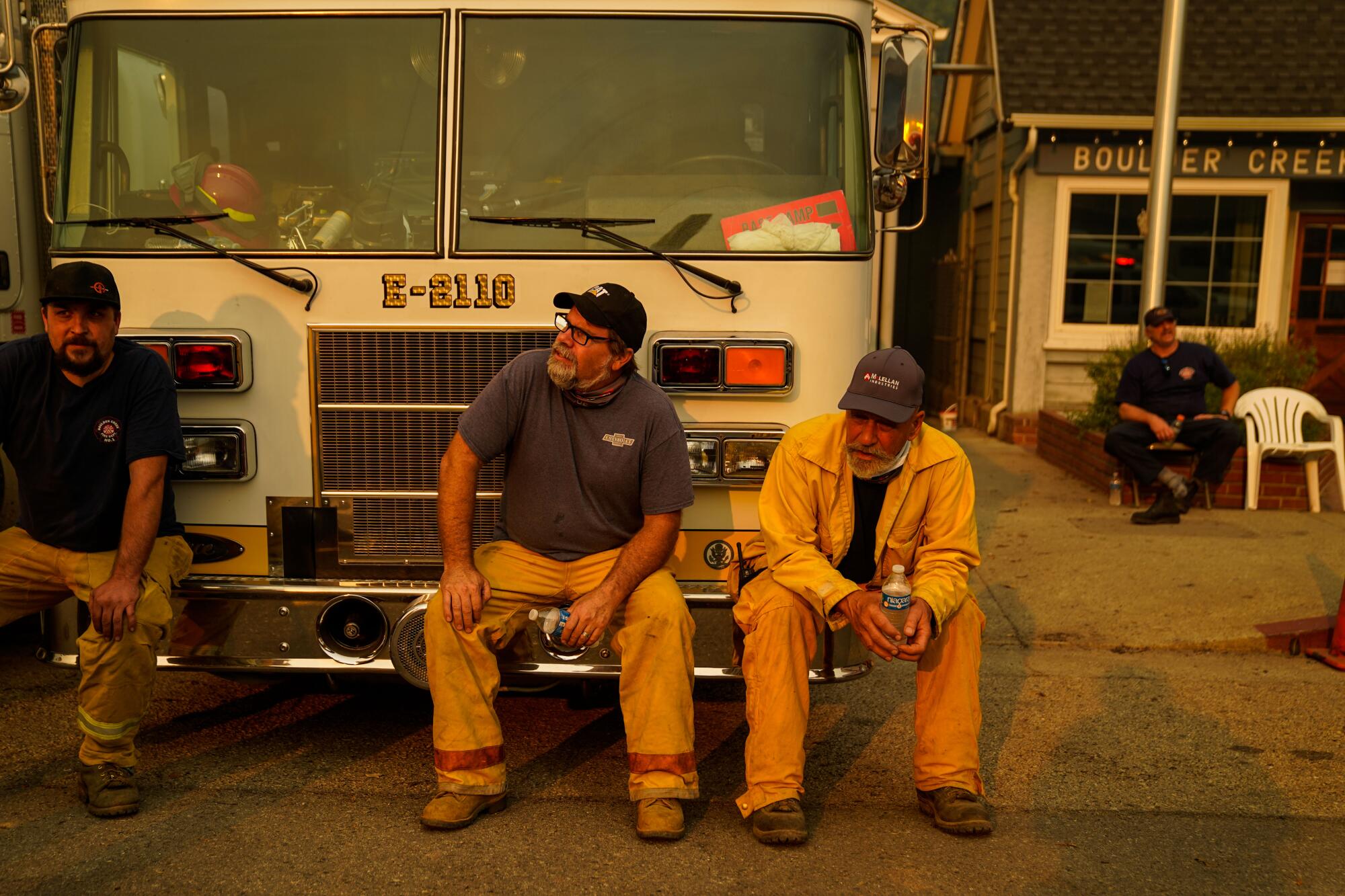
While the night sky periodically flared orange and red as nearby trees and houses were consumed by flames, he bustled about the parking area in the rear of the firehouse, directing the young men and women of the firefighting crew — including Kustin’s own son, Garrett, 23 — as they unloaded Torres’ supply truck.
He entered the rec hall, to show a visitor how quiet the space was from the activity outside, then paused to talk about the moment and the inspiration he drew from the younger firefighters, such as Bingham, who were battling these blazes with everything they had.
“You’ve got to understand, we do this kind of work because we care about people and their communities,” he said. “But this time, it’s different. This time, it’s our home.”
More to Read
Start your day right
Sign up for Essential California for news, features and recommendations from the L.A. Times and beyond in your inbox six days a week.
You may occasionally receive promotional content from the Los Angeles Times.
